Salt makes everything taste better! These eleven different types of salt include common salts like kosher and sea salt and more unusual salts like black lava salt.
Each kind of salt has a different use and unique types of recipes in which it should be used. This guide will outline the flavors of each kind of salt and how to use it in your cooking best!
For our purposes, we're sharing some of the more common types of salt. Many blends and infused salts that are regionally specific are not included on this list.
Some specialty salts on this list may only be available online, but many are readily available in grocery stores or spice stores.
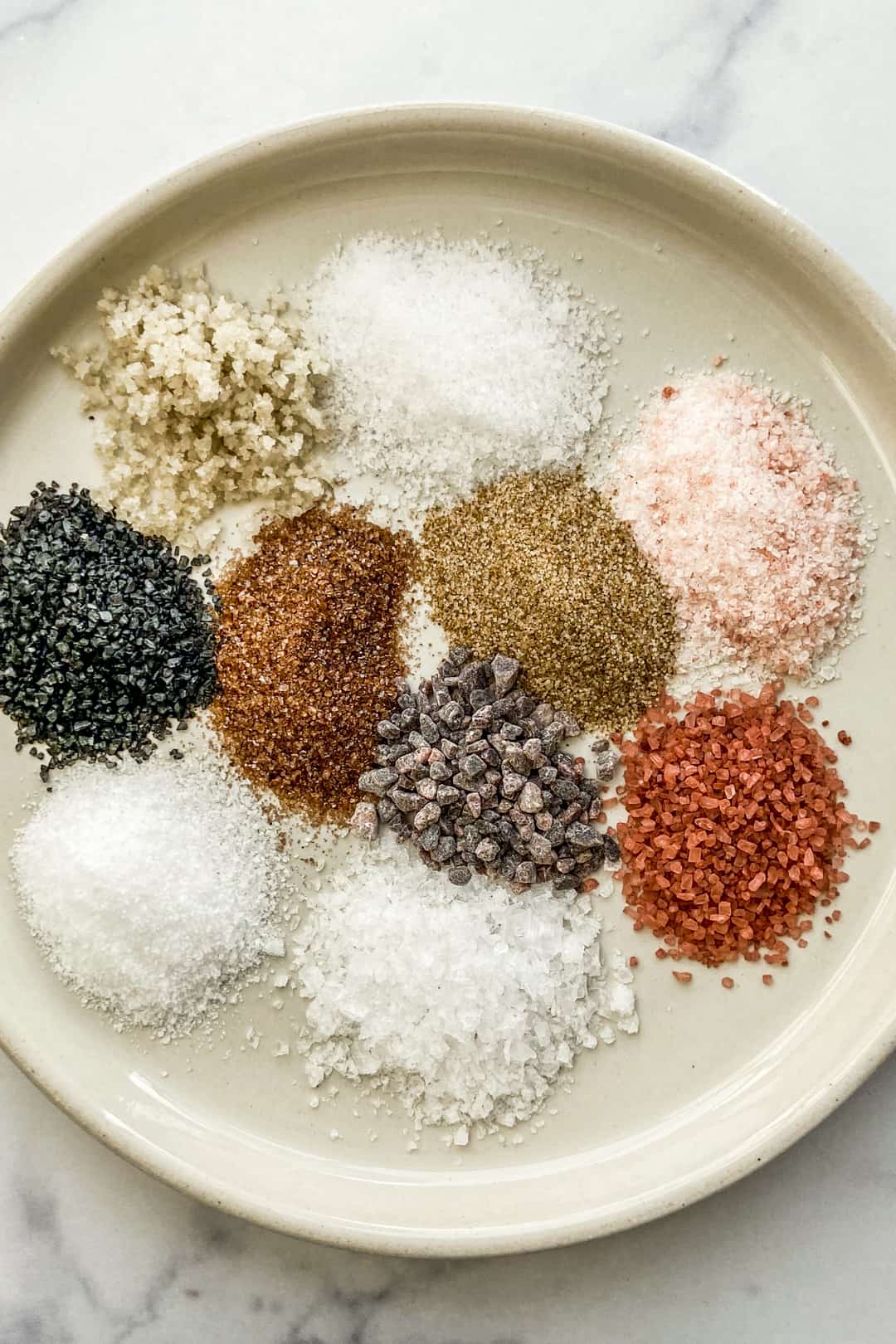
Links on some posts are affiliate links and as an Amazon Associate, I earn from qualifying purchases.
The Importance of Salt
Salt is a key ingredient in many recipes. It enhances flavor, acts as a preservative, and helps tenderize meat.
It's no wonder salt has been used throughout history as a currency! The word salary comes from the Latin word for salt.
The largest source of salt is the ocean—seawater provides an almost inexhaustible amount of salt. Salt can also be mined from rocks and minerals.
All types of salt are primarily sodium chloride, but some types have trace minerals that slightly change their flavor and color.
There are many varieties of salt available on the market, and each one has a different flavor and use. Here are ten types of salt and how to use them.
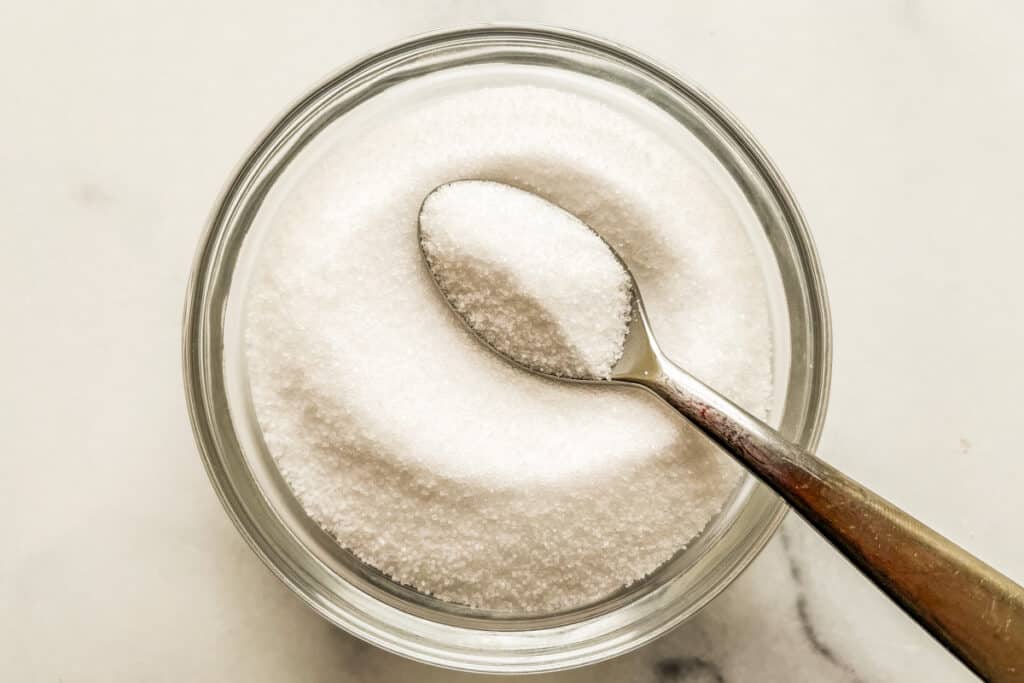
Table Salt
Table salt is the most common type of salt. It's what most people use to season their food. It's also used in canning and pickling.
Table salt consists of small, uniform crystals. Its fine grains make it easy to measure and add to recipes.
It typically contains anti-caking agents, which make it easier to pour and less likely to stick together in clumps.
How to Use It: Table salt is good for baking and most types of cooking. If you are sensitive to the taste of iodine, avoid using iodized salt in things like dressings or other dishes where you'll taste the salt.
Flavor: Standard salty flavor, but may also have some metallic flavor from iodine.
Cost: Table salt is the cheapest edible salt you'll find.
Kosher Salt
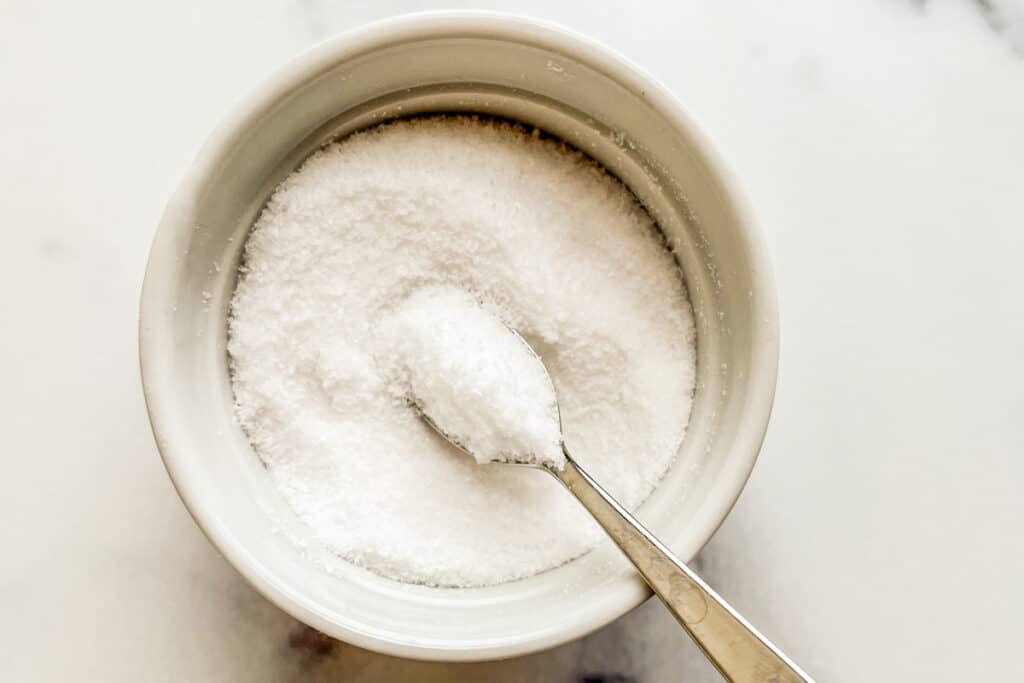
Kosher salt gets its name from being used in the koshering process, which is a way of drawing moisture from meat (a process of making food fit for consumption according to Jewish dietary law). All salt is kosher, though, so the name is a bit of a misnomer!
It's a popular choice for cooking because it has a clean, salty flavor, and it dissolves quickly and easily.
The salt crystals are small (not as small as table salt), so you get more salty flavor in each scoop than sea salt.
The two most popular brands in the US are Diamond Crystal and Morton Coarse Kosher Salt.
How to Use It: Use it to season meats and vegetables.
Flavor: Similar to table salt, but slightly saltier as crystals are larger.
Cost: More expensive than table salt but still a cheaper option overall.
Sea Salt
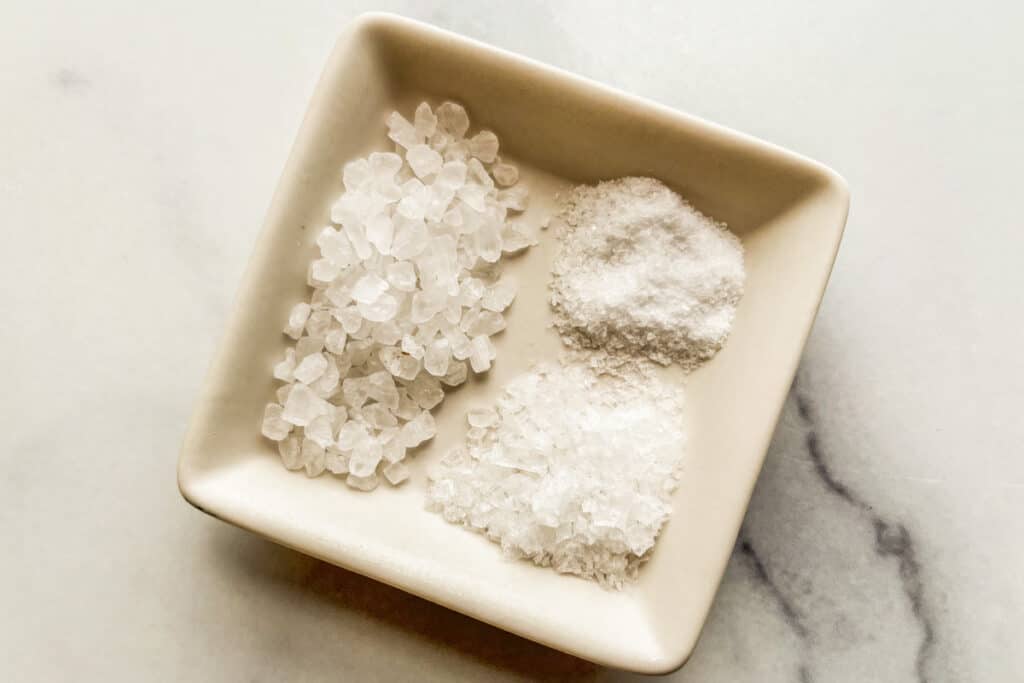
Sea salt is made from evaporated seawater. It has a slightly different flavor than table salt, and the crystals can vary in size.
It doesn't pack as tightly or dissolve as quickly as table salt and kosher salt. Because it's minimally processed, it may have trace amounts of other minerals that give it a more complex flavor.
One of the most famous flaky sea salts, Maldon flake salt, is harvested by hand. The flakes are large and have a distinct crunch.
How to Use It: Sea salt is great on meats, salads, or even chocolate. Flaky sea salt is great for finishing dishes, like salads or baked potatoes. The larger crystals hit your tongue and release a burst of salty flavor.
Flavor: Sea salt has a strong salty taste and may have a little 'ocean' taste as well.
Cost: Sea salt is quite common, and depending on the type you get it can be very reasonably priced.
Himalayan Pink Salt
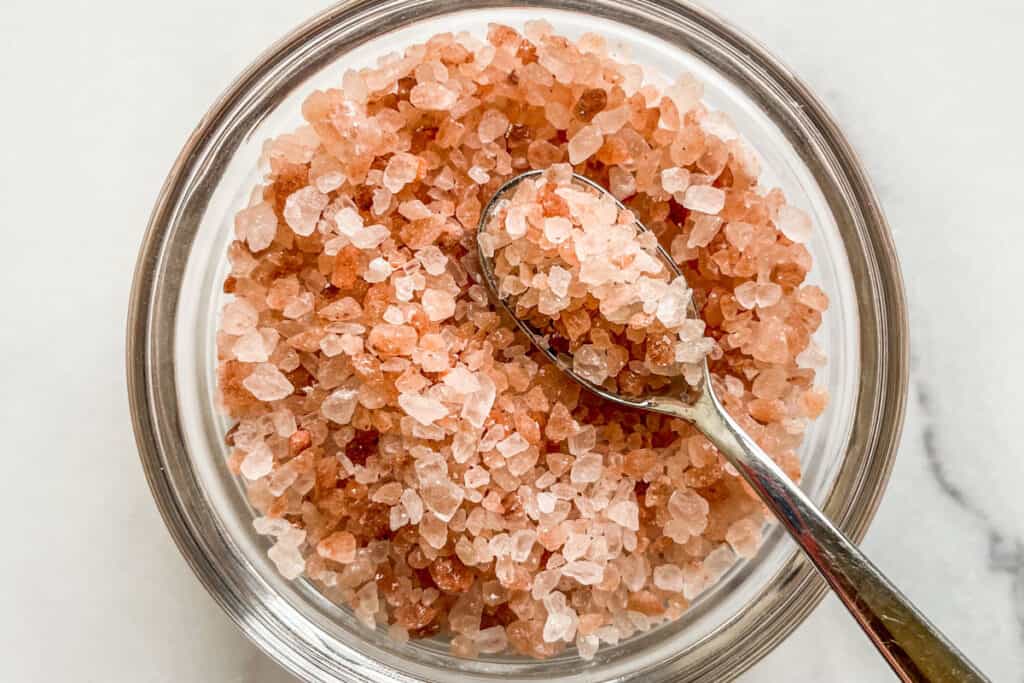
Pink Himalayan salt is a type of rock salt that's mined in the Himalayas. It has a distinct pink color and large, rough crystals - it's popular mostly because it's very pretty!
It's mineral-rich (it gets its color from iron) and has a complex flavor profile. Grind it up for a smoother, smaller salt grain.
You may hear about many purported health benefits of Himalayan salt, but most of it is just marketing. It is less processed than table salt but still has the same chemical composition.
How to Use It: It's perfect for seasoning meat, fish, and vegetables. Don't use it in dressings or other liquids where it will dissolve (you want to see the bright pink color)!
Flavor: Very salty with a bit more complexity, may have very light floral notes.
Cost: It's about 20 times more expensive than table salt! The difficult mining process and its current popularity both affect the price.
Himalayan Black Salt (Kala Namak)
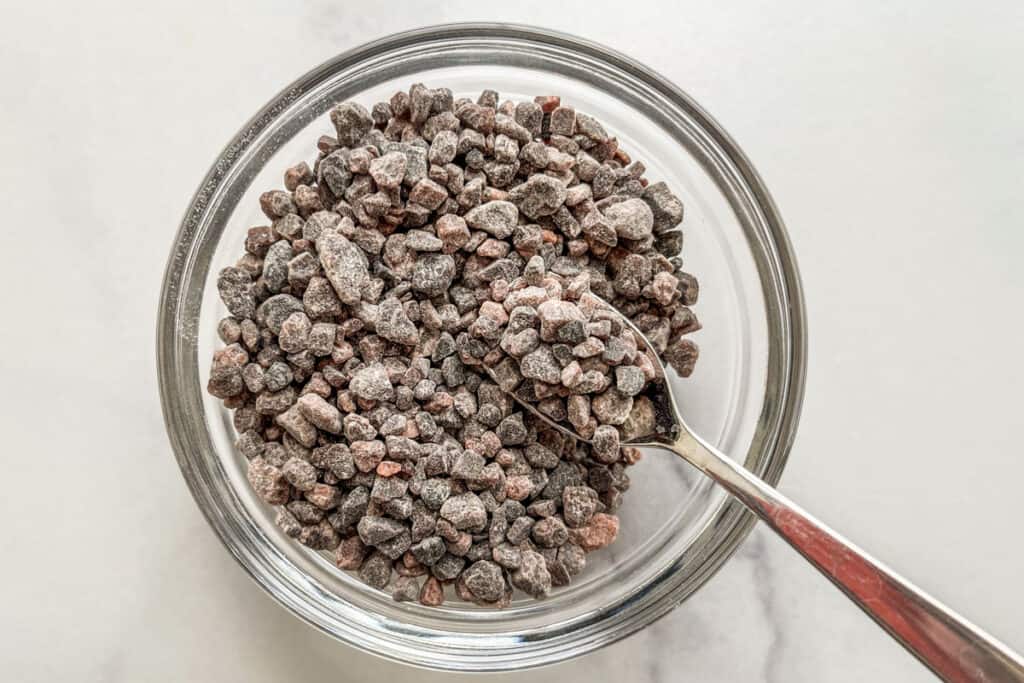
Kala Namak is a coarse salt that is actually pink Himalayan rock salt. It's been cooked in a kiln with charcoal and spices. It can range in color from black to dark pink.
It has a strong umami flavor that is sulfurous in nature. It's often used in Indian cuisine.
How to Use It: Use it in South Asian dishes like chaat, chutneys, salads, and raitas.
Flavor: Strong, rich flavor that has been compared to sulfur and eggs.
Cost: Kala Namak is more expensive than table salt and sea salt but less pricey than other specialty salts on this list.
Fleur de Sel
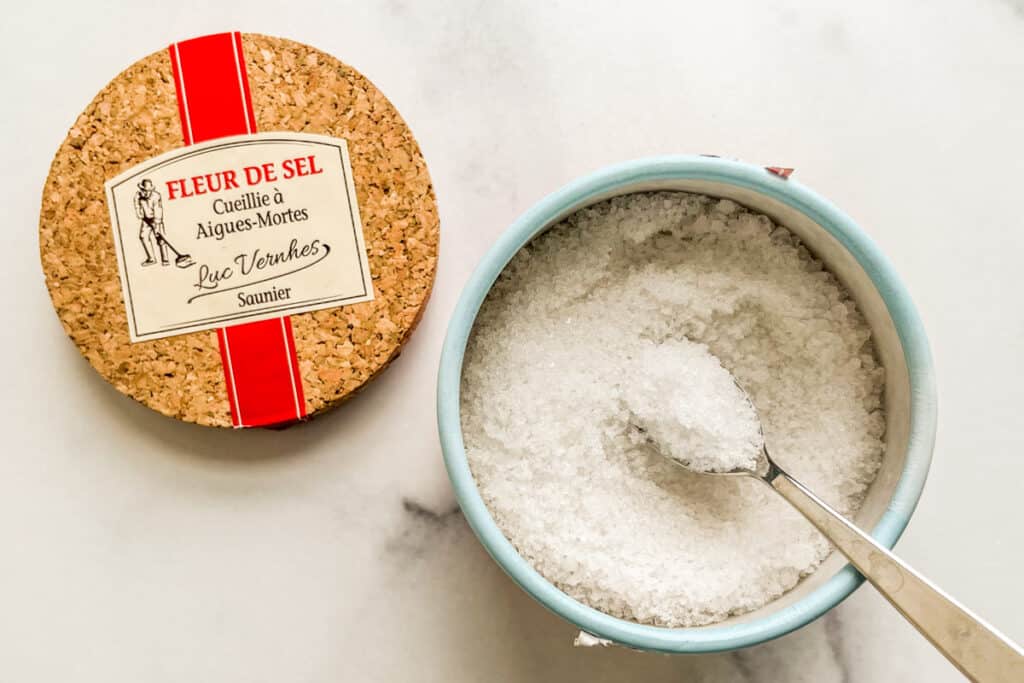
Fleur de Sel means "flower of salt" - it's a special, French salt that's harvested from the top layer of seawater as it evaporates in salt ponds.
It has a very delicate texture and is time-consuming to harvest, making it a specialty salt.
It makes a great hostess gift because it usually comes in pretty packaging.
How to Use It: Perfect for finishing dishes, vegetables, salads, and even chocolate desserts.
Flavor: Lightly briny flavor with a light texture.
Cost: One of the most expensive salts, because the salt ponds don't produce very much of it and it's a laborious process to collect. It can cost as much as $30 per pound.
Sel Gris
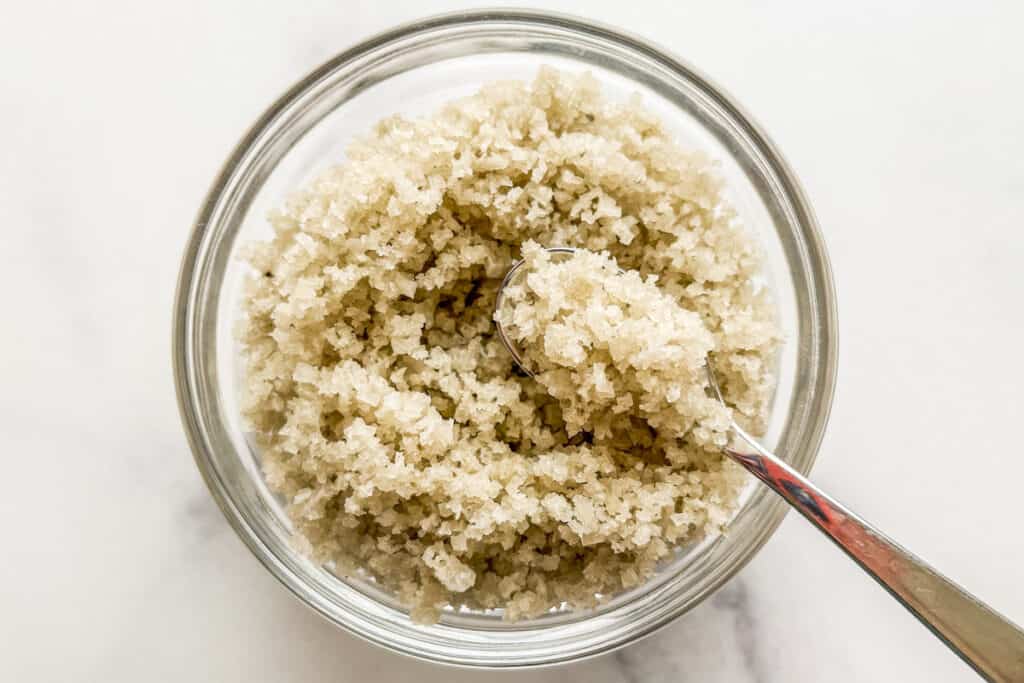
Sel Gris (also called grey salt and Celtic Sea Salt) is harvested similarly to Fleur de Sel in France; only it comes in contact with the bottom of the salt pan during harvesting.
It's a gray salt that has a slightly earthy flavor and a stickier texture.
Sel Gris is quite striking and has a nice flavor, but I haven't found it as useful in my cooking.
How to Use It: Sel Gris is excellent for seasoning meats and fish and can be used in the pickling process.
Flavor: Briny flavor with a sandy texture.
Cost: Sel Gris is more expensive than regular sea salt but much less expensive than Fleur de Sel.
Hawaiian Red Salt (Alaea Salt)
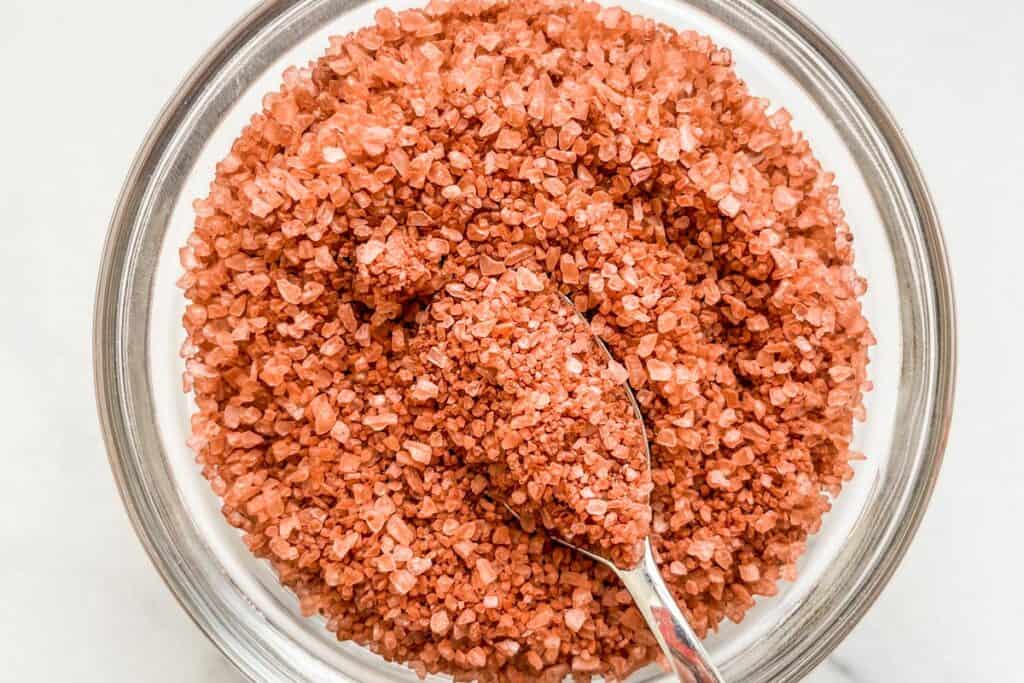
Alaea salt is a coarse Hawaiian sea salt that's been mixed with 'alaea, an iron-rich volcanic clay - hence the deep red color.
It's used extensively in Hawaiian cuisine and dishes like poke, jerky, and kalua pig.
How to Use It: Use it in dishes that would be good with some colorful finishing salt and a bit of crunch - veggies, salads, meat, mashed potatoes, and eggs.
Flavor: Robust, rich flavor with a hint of sweetness.
Cost: Alaea salt is expensive because it's harvested by hand and is only sourced in a few locations in Hawaii.
Black Lava Salt
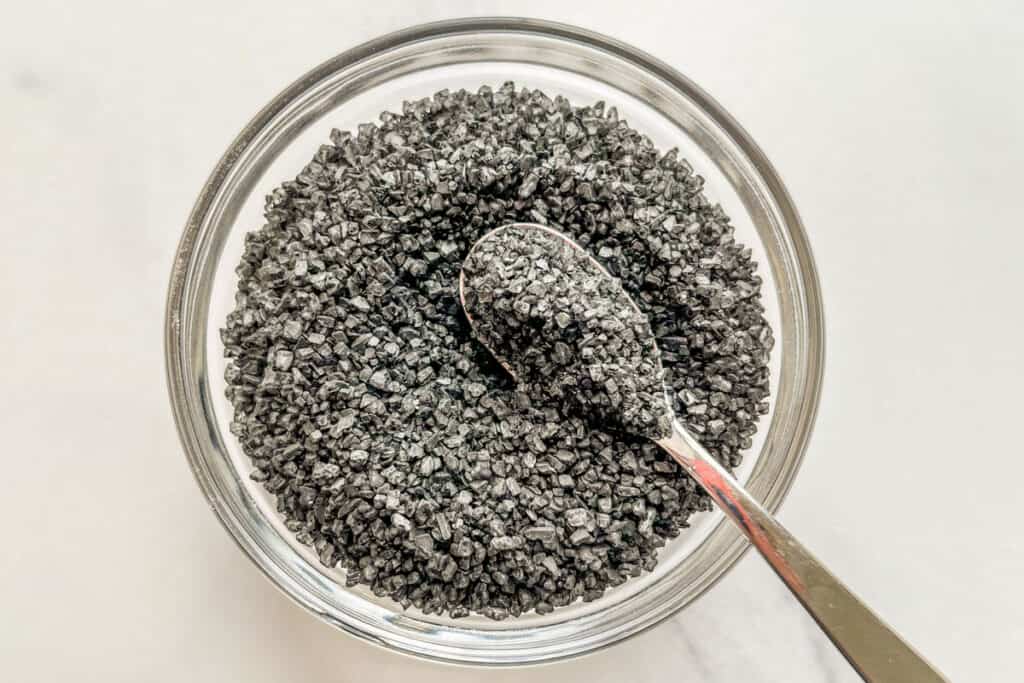
Hawaiian black lava salt is a sea salt that's blended with activated charcoal to get the black color.
This strongly flavored sea salt is a great addition to many dishes and should mainly be used as a garnish.
How to Use It: Use it as a garnish on deviled eggs (this is my favorite way to use it), salads, grilled meat, fruit, or desserts. You can also use it to add flavor to cocktails or other drinks.
Flavor: Strong smoky flavor with some nuttiness.
Cost: Black lava salt is expensive and usually around the same price as Hawaiian red salt.
Celery Salt
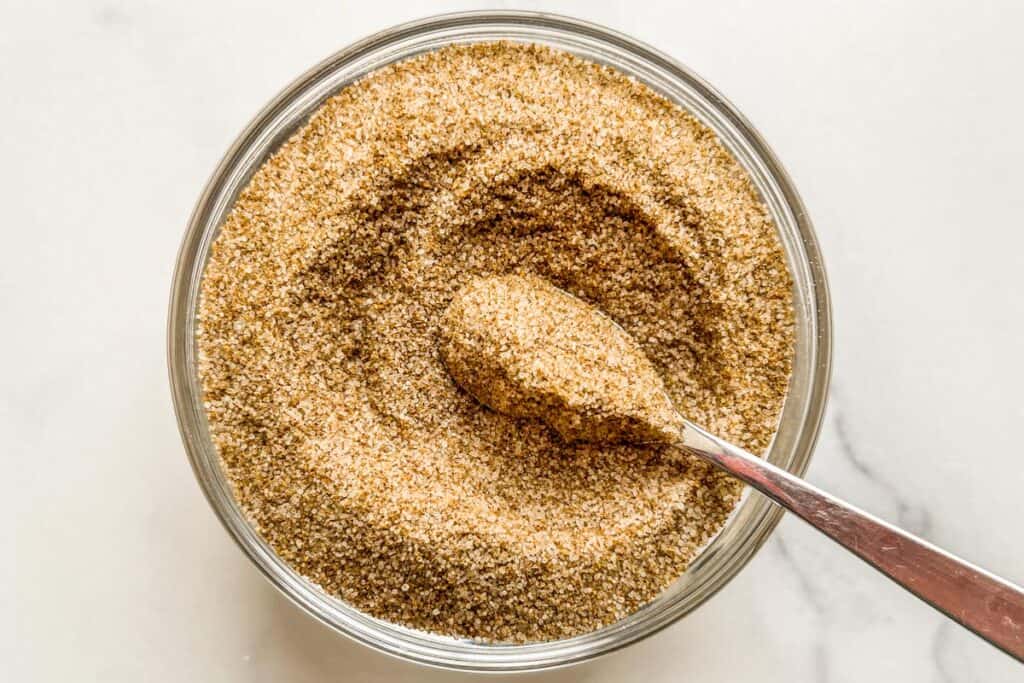
Celery salt is made from crushed celery seeds and salt. It has a subtle and mild flavor that's distinctive because of the peppery, grassy flavor of the celery seeds.
It's often used as a seasoning for Bloody Marys, but it can also add flavor to salads and roasted vegetables.
This is a fun salt to gift people as part of a Bloody Mary cocktail kit!
How to Use It: Use it to season a Chicago-style hot dog, in homemade Old Bay seasoning, or in cocktails.
Flavor: A light grassy flavor with a subtle peppery bite.
Cost: Celery salt is inexpensive and usually costs a little more than table salt.
Smoked Salt
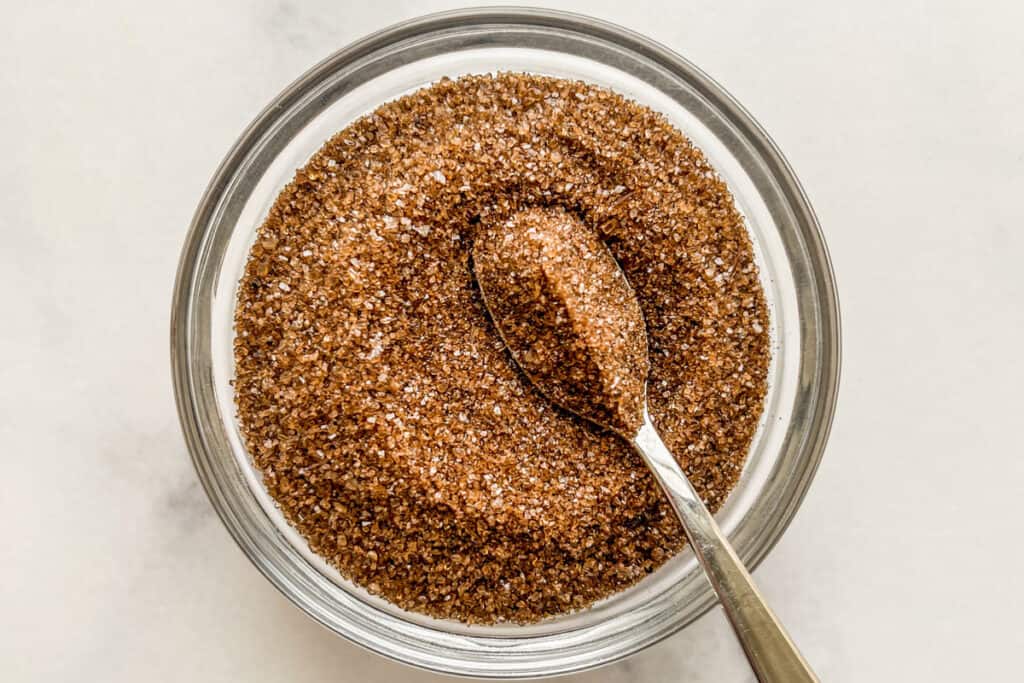
Smoked salt is made by smoking sea salt or other types of salt with wood. Salts can be infused with different types of wood smoke, like mesquite, hickory, or apple.
The flavor of smoked salt can range from mild to intense, so it's important to taste it before using it in a dish.
How to Use It: Smoked salt is great on grilled meats, roasted vegetables, and even popcorn.
Flavor: Aromatic smoky flavor that can range from bold to slightly sweet, depending on the type of wood used.
Cost: Depending on where you source it, it can be inexpensive. You can also make it at home if you have a smoker!
Salt Substitutions
If you're out of a specific kind of salt or can't find it, here are substitutions you can make.
Table Salt - Substitute finely ground sea salt, kosher salt (double the amount), finely ground Himalayan salt
Kosher Salt - Sea salt (half the amount), Himalayan salt
Coarse Sea Salt - Coarse Himalayan salt
Fine Sea Salt - Table salt, kosher salt (double the amount)
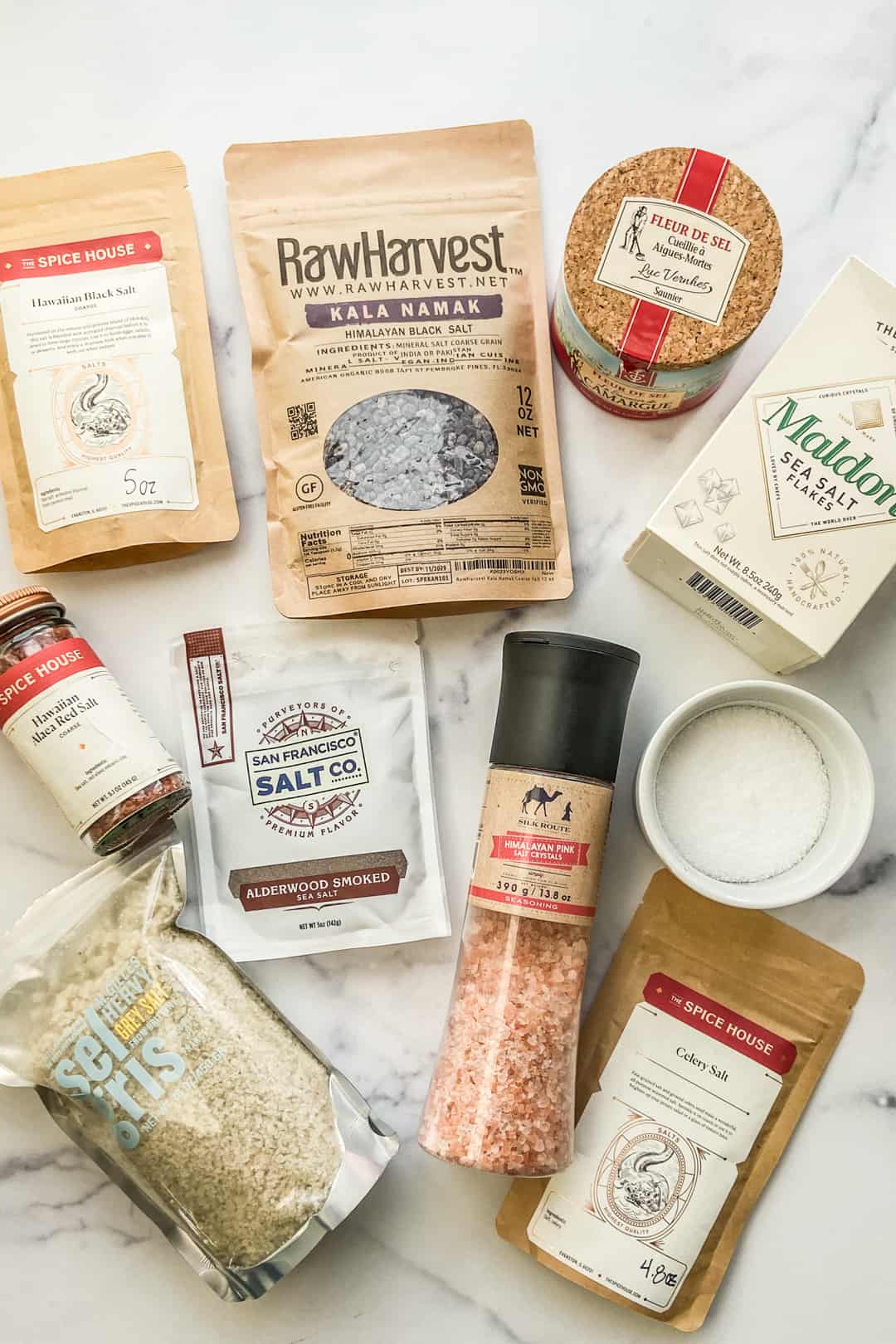
Salt FAQs
Does salt go bad?
Table salt expires after about five years, but unrefined salts will basically keep forever.
How to keep salt from clumping?
There is nothing worse than clumpy salt; you can keep it from sticking together by adding an element to soak up excess moisture.
Store your salt in a cool, dry place with as little moisture as possible. If your salt still sticks, add a few grains of rice to it; they will soak up any moisture.
What is a finishing salt?
Finishing salts are any specialty salts used to 'finish' a dish, meaning sprinkle them on top before serving.
They're usually more expensive salts like Fleur de Sel, Sel Gris, Black Lava Salt, etc. They usually have larger flakes and would be a bit crunchy.





Leave a Reply